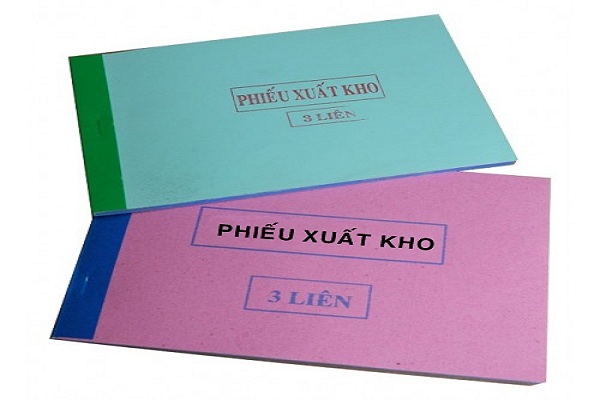Use of Warehouse Release Notes as Documents for Goods Circulation in the Market
This is a noteworthy content stipulated in Circular 68/2019/TT-BTC guiding the implementation of certain provisions of Decree 119/2018/ND-CP on electronic invoices for the sale of goods and provision of services.

Illustrative Image
To be specific, according to Clause 5, Article 6 this Circular, the application of electronic invoices and electronic warehouse release cum transportation vouchers for certain specific cases as per management requirements are guided as follows:
- In the case of receiving entrusted import of goods, if the business entity receiving the entrusted import has paid value-added tax at the import stage, it uses electronic invoices when returning goods to the business entity that entrusted the import. If value-added tax at the import stage has not been paid, when returning entrusted import goods, the entity entrusted to import issues an electronic warehouse release cum transportation voucher as stipulated to serve as documentation for the distribution of goods in the market.
- In the case of entrusted export of goods, when delivering goods to the entity entrusted, the entity with goods for entrusted export uses an electronic warehouse release cum transportation voucher.
Once the goods have been actually exported with the confirmation of customs authorities, based on reconciliation documents and confirmation of the actual quantity and value of exported goods from the entity entrusted with the export, the entity with goods for entrusted export issues a value-added tax electronic invoice to declare and pay tax, claim tax refunds, or a sales electronic invoice. The entity entrusted with export uses the value-added tax electronic invoice or sales electronic invoice to issue to foreign customers.
- Business entities with goods or service exports (including entities processing export goods) use value-added tax electronic invoices or sales electronic invoices for exporting goods or services.
When shipping goods to the border gate or place for export procedures, entities use electronic warehouse release cum transportation vouchers as stipulated to serve as documentation for the circulation of goods in the market. After completing export procedures, the entity issues a value-added tax invoice or sales invoice for the exported goods.
- Business organizations that declare and pay value-added tax by the deduction method when transferring goods among dependent accounting units like branches, stores in different localities (provinces, centrally-run cities) for sale or transfer between branches and dependent units; export goods to agencies acting as agents for sale at a specified price and earning commissions, based on the business organization and accounting method, the entities can choose one of two ways: use the value-added tax electronic invoice as a basis for payment and declare and pay value-added tax independently at each unit and stage or use electronic warehouse release cum transportation vouchers for goods exported to agents.
- Dependent units of business entities in agriculture, forestry, and fisheries that have registered and implemented value-added tax declaration and payment by the deduction method, and purchase agricultural, forestry, and fisheries goods for transfer or sale back to the business entity's main office use electronic warehouse release cum transportation vouchers for the transfer or sale and do not use value-added tax electronic invoices.
- Organizations and individuals exporting goods for mobile sales use electronic warehouse release cum transportation vouchers as stipulated. When selling goods, they issue electronic invoices as prescribed.
- In the case of capital contributions by assets of organizations and individuals in Vietnam to establish enterprises, no invoice is required; instead, contribution certification minutes, asset handover minutes, asset valuation minutes with the dossier on asset origin are used.
- For asset transfers between dependent accounting units within an organization; asset transfers during division, separation, merger, consolidation, or conversion of enterprises, the organization with the asset transfer must have a transfer order, accompanied by a dossier on asset origin, and no invoice is required.
- In cases of asset transfer between independent accounting units or between fully legal member units within the same organization, the organization with assets being transferred must issue an electronic invoice as if selling goods.
Additionally, this Circular specifically stipulates cases where enterprises must use electronic invoices with a tax authority’s code. See details of these cases HERE.
Nguyen Trinh
- Number of deputy directors of departments in Vietnam in accordance with Decree 45/2025/ND-CP
- Cases ineligible for pardon in Vietnam in 2025
- Decree 50/2025 amending Decree 151/2017 on the management of public assets in Vietnam
- Circular 07/2025 amending Circular 02/2022 on the Law on Environmental Protection in Vietnam
- Adjustment to the organizational structure of the Ministry of Health of Vietnam: Certain agencies are no longer listed in the organizational structure
- Vietnam aims to welcome 22-23 million international tourists in Vietnam in 2025
-

- Notable new policies of Vietnam effective as of ...
- 16:26, 11/04/2025
-
.Medium.png)
- Notable documents of Vietnam in the previous week ...
- 16:21, 11/04/2025
-
.Medium.png)
- Notable documents of Vietnam in the previous week ...
- 16:11, 02/04/2025
-
.Medium.png)
- Notable new policies of Vietnam to be effective ...
- 16:04, 02/04/2025
-
.Medium.png)
- Notable new policies of Vietnam effective from ...
- 14:51, 21/03/2025
 Article table of contents
Article table of contents
